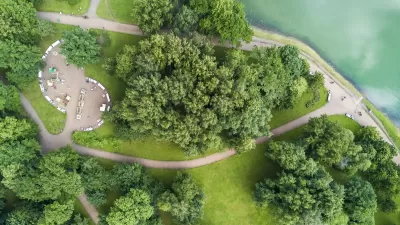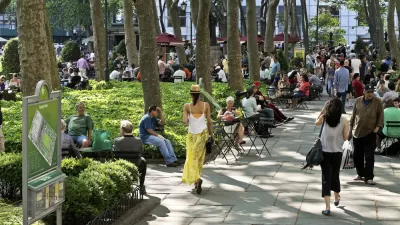Thanks to private funds, NYC invested six times more in building and improving its parks during Mayor Bloomberg's tenure than was spent in the prior decade. But what will happen to these parks when their billionaire backer leaves office?
We've looked before at New York City's growing parks disparity. But another concern with the influx of private funds that's made the city's astonishing parks expansion possible, at the same time that the Parks and Recreation department's maintenance budget was being cut, is what will happen to the shiny new open spaces when the Mayor with the billion dollar rolodex leaves office.
"There's no question that the big-picture story is an impressive one: There have been new parks and significant renovations to large parks," said Holly Leicht, executive director of New Yorkers for Parks.
"The big concern is that already the maintenance budget has not kept up with the existing supply of parkland, much less being enough for additional parks," Ms. Leicht said. "Will they really be able to sustain themselves outside of the public budget, as was the premise of their creation?"
"Nearly everyone agrees that some private support for parks is essential given constrained municipal budgets," writes Laura Kusisto. "But parks groups said it may also be time to step back and realize that the private sector can't entirely be relied upon to replace shrinking parks budgets."
"'The ones that are expected to fly on their own, whether they can do it or not is their problem, but it is also our problem as a society as a whole,' said Deborah Marton, of the New York Restoration Project, which helps maintain parks in low-income neighborhoods. 'Then we have failed public spaces that we all have to deal with.'"
FULL STORY: New York City's Parks Grow With Private Funds

Planetizen Federal Action Tracker
A weekly monitor of how Trump’s orders and actions are impacting planners and planning in America.

Map: Where Senate Republicans Want to Sell Your Public Lands
For public land advocates, the Senate Republicans’ proposal to sell millions of acres of public land in the West is “the biggest fight of their careers.”

Restaurant Patios Were a Pandemic Win — Why Were They so Hard to Keep?
Social distancing requirements and changes in travel patterns prompted cities to pilot new uses for street and sidewalk space. Then it got complicated.

Albuquerque Route 66 Motels Become Affordable Housing
A $4 million city fund is incentivizing developers to breathe new life into derelict midcentury motels.

DC Area County Eliminates Bus Fares
Montgomery County joins a growing trend of making transit free.

Platform Pilsner: Vancouver Transit Agency Releases... a Beer?
TransLink will receive a portion of every sale of the four-pack.
Urban Design for Planners 1: Software Tools
This six-course series explores essential urban design concepts using open source software and equips planners with the tools they need to participate fully in the urban design process.
Planning for Universal Design
Learn the tools for implementing Universal Design in planning regulations.
Heyer Gruel & Associates PA
JM Goldson LLC
Custer County Colorado
City of Camden Redevelopment Agency
City of Astoria
Transportation Research & Education Center (TREC) at Portland State University
Camden Redevelopment Agency
City of Claremont
Municipality of Princeton (NJ)





























